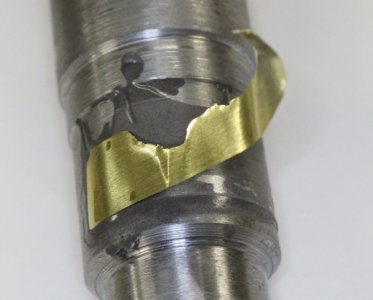That's interesting. I'm not sure if I'm interpreting the sizing chart correctly but the ID/OD (d vs D) difference is nominally 1mm different. A bit thinner in the small diameter range, a bit bigger in the larger ones. So nominal 1mm = 0.039", so 1/2 thickness (=the annular gap) would be about 0.020". This drill application required only 0.001" shim.
So this system might require you to select a next bigger bearing maybe? We chatted about that early on in the post with the possibility of going up to 17mm bearing (0.669" ID) & machining a sleeve.
So this system might require you to select a next bigger bearing maybe? We chatted about that early on in the post with the possibility of going up to 17mm bearing (0.669" ID) & machining a sleeve.






